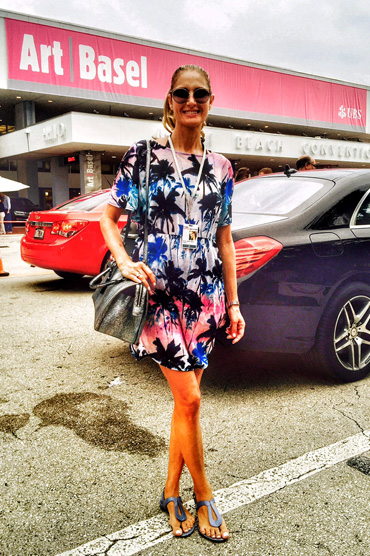 Plunging for a whole week in Miami Art Basel eclectic mood is an excellent opportunity to train creativity, that is one of the most functional potentials for our search for happiness.
Plunging for a whole week in Miami Art Basel eclectic mood is an excellent opportunity to train creativity, that is one of the most functional potentials for our search for happiness.
Indeed, expressed at existential level, creativity is the personal power to be trained on a daily basis via rewarding actions and positive choices.
Now that in fashion fatigue emerges due to the numerous ‘tours de force’ in fashion show backstage and the most well-known designers are continually producing seasonal novelties, getting in touch with international artists and their gallerists allows approaching a context that does not involve any immediate deadlines and performance anxiety.
It is understandable that painters and sculptors have less complicated working rhythms than fashion designers and also that gallerists are more obliging than showroom owners, but the truth is that if one examines the freest creative process behind a painting or a sculpture, he or she will spontaneously wonder: how can one create a new successful collection of clothing and accessories every six to eight weeks, while expressing his or her creative potential at best?
The answer could be that not being art, as it is not only displayed in museums, fashion must respect the rules of trade and constant market demands, being the prerogative of a larger organized community. Indeed, every day, using the clothes we wear, we express our identity and even though we do not need another pair of shoes or our millionth new bag, we can always come up with a good reason to purchase the latest accessory that will have us dreaming. We are educated to purchase.
Conversely, if we were to be creative in all spheres of our lives, besides loving ourselves as we are, we would focus on artists hidden in our hearts who look forward to freeing their creativity without spending a fortune. Obviously, this is mere conjecture, as fashion itself is a continuous source of inspiration, however, it seems that spending for clothes has replaced the idea of investing the same resources in art and culture.
Therefore, fashion designers who would like to have the time to dream with us, are often stuck in an assembly line that can destroy all research activities, including the exploration of new possibilities. A second question now emerges: how can one actually train creativity if everything is dictated by collection schedules?
The answer can undoubtedly be found in the words of Susanne Vielmetter, Los Angeles gallerist, who clearly stated the following, during one of her Conversations with Nicole Eisenman, artist and winner of 2015 MacArthur “Genius Grant”, represented by her: “Creativity takes place where there is no stress, often in a cozy environment, where tolerance, independence and camaraderie prevail. At that point, quality does not lie in things, but in those who have created them”.
I will take my leave with this third and last question: in your opinion, on a 1-to- 10 scale, how much can creativity be regulated?

